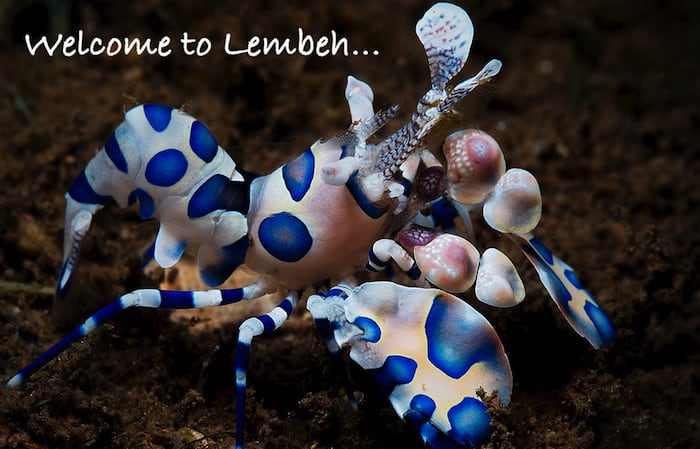Have you ever wondered where on Earth has the most unusual and rare marine life? Do you know that the Lembeh Strait is known as the “Critter Capital of the World”? It’s true, if you want to see unusual species, some of which look like they would be better suited to outer space than underwater, the Lembeh Strait should be on your bucket list!
Favourite Critters in Lembeh……
Pygmy seahorse – Hippocampus bargibanti
One of the smallest seahorse species on Earth and the first species of pygmy seahorse to be discovered. This master of camouflage develops tubercules (warty like bumps) which mimic the coral polyps on the sea fans in which it inhabits.
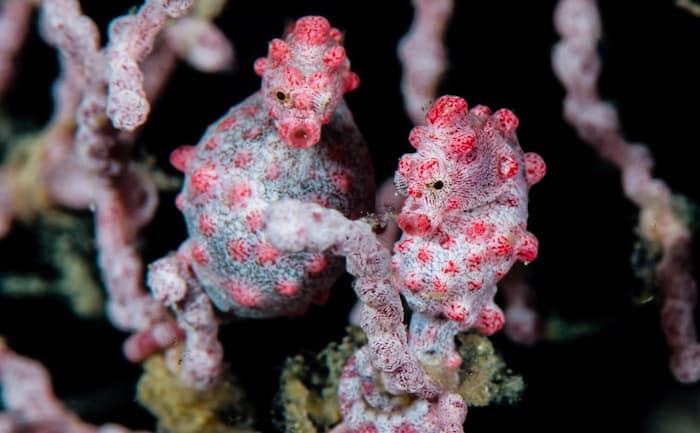
Pygmy seahorses are the smallest species of seahorse in the world. (Note the pregnant male on the left!)
Flamboyant cuttlefish – Metasepia pfefferi
Small but vibrant, this small species of cuttlefish “walks” on it’s extended tentacles and when threatened will flash vivid hues of orange, pink yellow and white. If you spot one of these critters look around carefully as they are often found in pairs.

Flaboyant cuttlefish might be small but they are big on colours
Mimic octopus – Thaumoctopus mimicus
Is it is flounder? Is it a lionfish? No, wait… it’s the mimic octopus! The only species of octopus known on earth to mimic other marine species as a form of defence. This incredible cephalopod was actually discovered here in North Sulawesi!
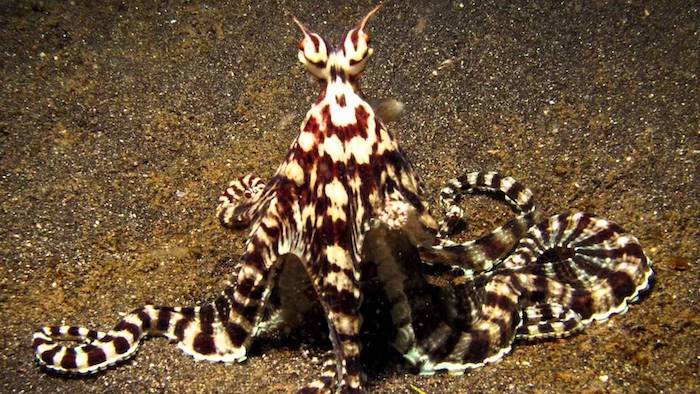
Mimic octopus were discovered in North Sulawesi
Coconut octopus – Amphioctopus marginatus
The coconut octopus is the first known, and only marine species known which has the ability to utilize “tools”. This crazy critter lives inside bi-valve shells which it draws closed to protect itself. When it finds a single shell it will place it under its mantel and “carry” it while walking on extended arms, like stilts, to find the other half. When shells are in short supply it will utilize coconut husks (hence its name) and it will even reside in beer bottles and carry pieces of debris to serve as a “door” or “seal”.

Coconut octopus live in bi-valve shells and coconut husks
Hairy frogfish – Antennarius striatus
The Hairy Frogfish is a highlight of the Lembeh Strait and they rotate from dive site to dive site with the seasons. These incredible critters use their hairy appearance to disguise themselves among patches of sea grass, sea weed and other corals.

Hairy Frogfish are a highlight of diving in Lembeh
Harlequin Shrimps – Hymenocera elegans
These carnivorous critters feed on sea stars – but not out in the open. They will work in pairs (one male and one female) and cut off a sea stars arm and carry it back to their burrow to feed on. Harlequin shrimps are one of the most carnivorous crustaceans in the Lembeh Strait!
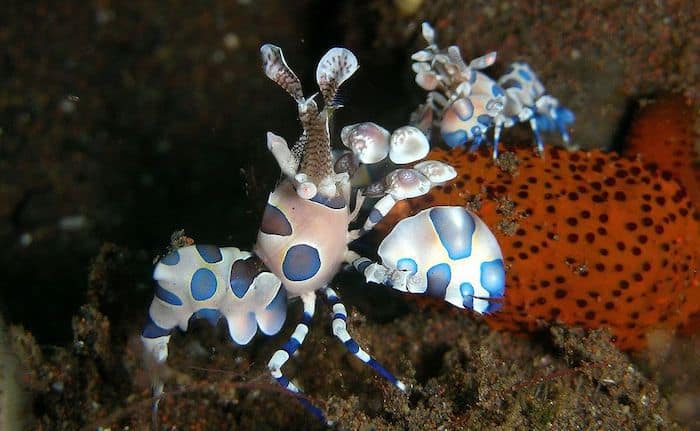
The harlequin shrimp is a carnivorous critter but highly photogenic
Blue Ring Octopus – Hapalochlaena sp.
Small but deadly – did you know that this tiny species of octopus is highly venomous? In the Lembeh Strait we have two known species of blue ring which are characterised by their (er…) blue rings, which they flash when threatened.
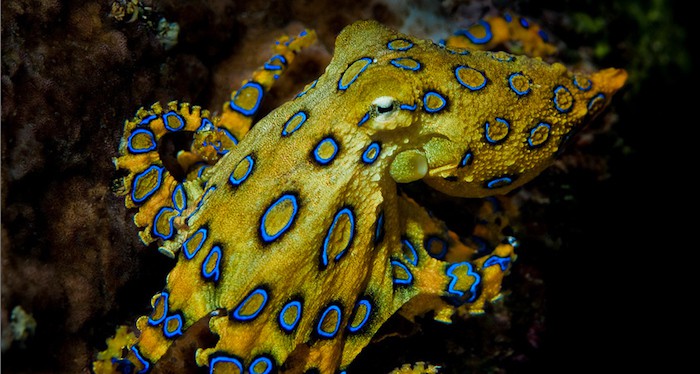
Highly venomous but flash incredible colours
Dive into Lembeh…
This is just a tiny example of the amazing marine species which we have here in Lembeh. If you are interested in marine life or are an underwater photographer, then Lembeh is definitely somewhere you should visit.
Did you know that Lembeh is just an easy transfer away from our Bunaken Island Resort? Why not combine incredible reefs with muck diving in one trip? No flights, no long journeys and no hassle! Bunaken is also on the migratory path for many species of whales and dolphins – read more here.
Want to dive Lembeh and Save?
Check out our Special Offers HERE!!
To make a reservation or for more information, please fill in the form below and we’ll get right back to you.

